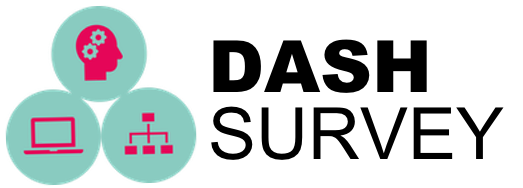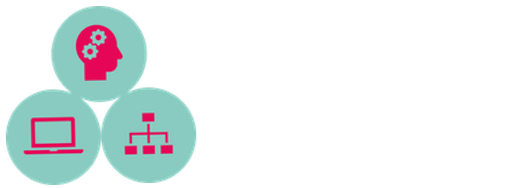As a team we’ve done our share of survey design for digital skills (you can see some of our previous work here), so we’ve developed some principles that guide our approach. But every sector is different, and the situation we are in today is certainly unique. So how have we approached the task this time?
First, we start with the belief that the digital agenda means investing in people. Technology changes, but engaged, motivated and digitally confident people will always be ahead of the curve. So every question we ask is designed to help respondents reflect on their digital practices and interests. And every answer is designed to give organisations the information they need to develop people better.
We know that developing people means attending to three issues:
- The people themselves: their attitudes and preferences, the technologies they use in everyday life, their confidence to adopt and adapt
- The digital practices demanded of them in their roles
- The organisations they work in: how well they support (and how they can sometimes hinder) people’s natural ability to share and apply their skills, and to learn new ones.
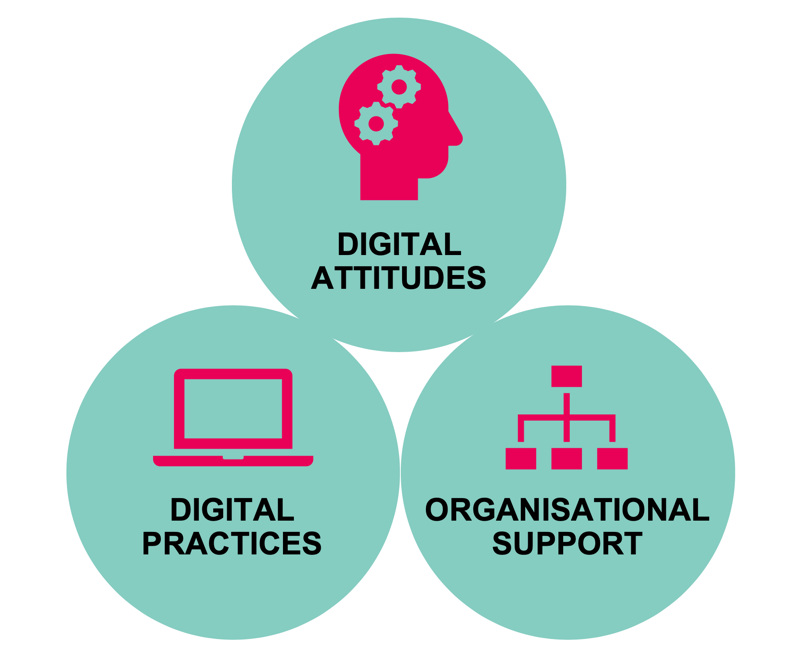
Of these three, the most challenging for us was to develop a detailed picture of ‘digital practice’ in the context of the heritage sector. Not just what happens in cutting edge, digital-first organisations, but how staff and volunteers are using their digital skills – from the everyday to the highly specialised – in every corner of this complex sector. We began with the newly launched Digital Culture Compass Tracker, a tool for senior leaders to assess the digital maturity of organisations. Some areas of the Tracker translated readily into personal digital practices. Alongside this work we reviewed 14 other high quality frameworks and research reports relevant to the heritage sector.
As the Covid-19 crisis deepened, we shifted the focus of our analysis towards those skills and practices that would support the sector through a time of disruption, and enable a pivot to online ways of working and engaging audiences. Hand-in-hand with this, we adapted our technical delivery model to ensure that the DASH project gives something useful back to organisations. All organisations that collect 10+ responses can now view and respond to their own data. (More about the technical build in a future blog post).
In the end, after collation, consultation and cross-referencing with other projects, our draft framework of digital practice for heritage had four cross-cutting principles and five ‘heritage activity priority areas’:
Principles (with a focus on developing people):
- Inclusivity: actively building diverse audiences; lowering barriers to access
- Openness: sharing our heritage publicly
- Innovation: looking for novel solutions, responding to new risks and opportunities
- Wellbeing: heritage as life enrichment; care for digital users
Heritage activity priority areas:
- Effective digital working: working remotely, handling data, digital leadership and governance
- Taking heritage online: digitisation and recording, managing digital and data services, managing online meetings and events
- Engaging and fundraising: engaging online audience, digital fundraising and promotion, enhancing real-world sites and settings
- Collaborating: building online communities, collaboration and co-creation, staying safe, secure and well
- Adapting and innovating: developing new services, creating novel experiences with digital media, research and evaluation
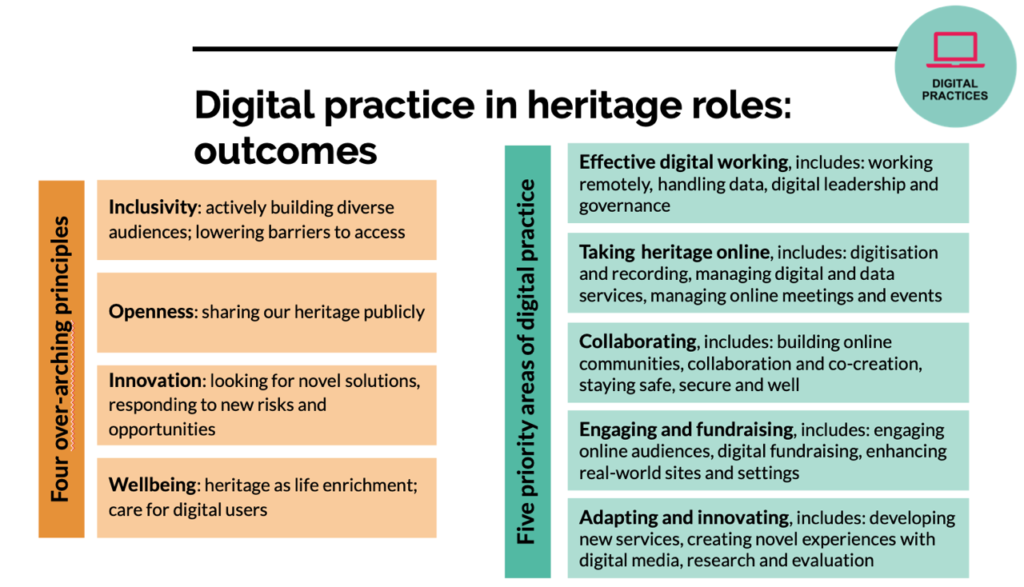
Every question in the DASH survey is mapped to these principles and practices. And for every question we provide suggestions for how organisations can respond to their data.
So while our technical build now offers organisation-level data dashboards and benchmarking reports, our underlying content framework ensures that these can be put to real use, helping organisations to meet their members’ needs and improving the effectiveness of their processes and people into the future.
